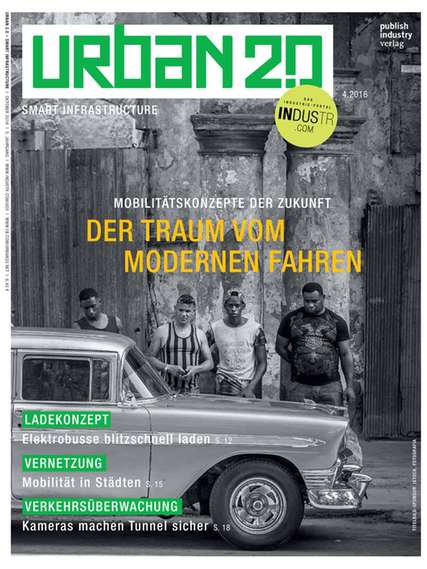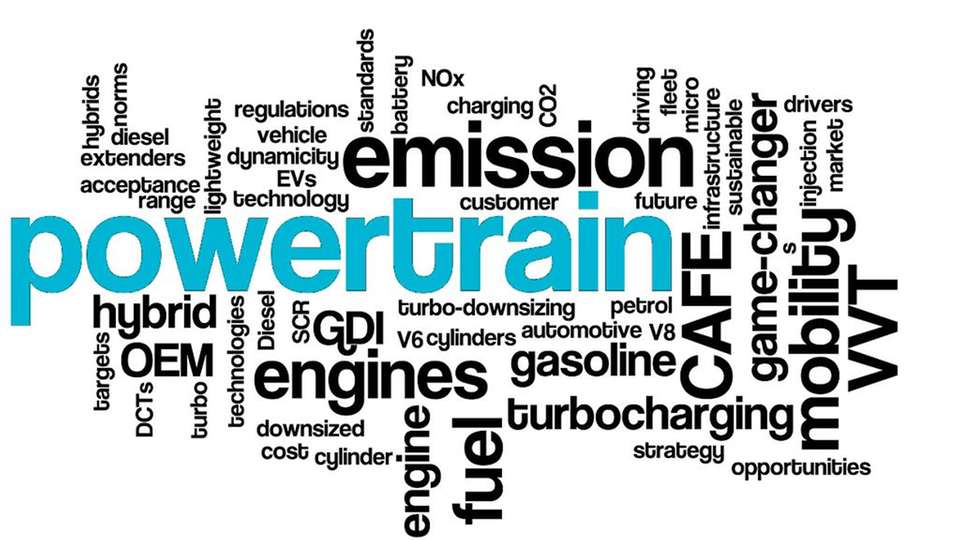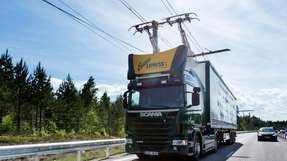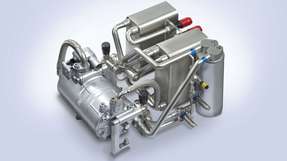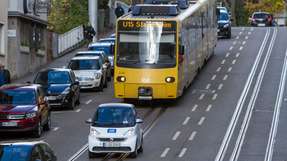In a world filled with dynamicity and opportunities, the only constant is change. The automotive landscape today is experiencing this change, and is moving towards a future of mobility. With disruptive new business models like corporate car sharing, mobility integration and real-time ride sharing to name a few, the future automotive roadmap and ever-changing value chain provides opportunities to realise new mobility services and products.
Global car makers are no more in the business of only manufacturing cars anymore. Rather, they are in the business of providing sustainable, green, flexible and cost-effective mobility. However, success lies in an OEM�??s core competence, strategy and ability to embrace this change and adapt to legislative, economic and social drivers. Region specific emission regulations, fuel economy targets, dynamic consumer demands and increasing expectations are amongst the key factors encouraging change in the automotive horizon.
Futuristic powertrain technologies amongst other areas of development such as lightweight construction, infotainment and telematics, therefore have a significant role to play in response to these drivers for change.
Emission Standards and Fuel Economy Targets - A Game Changer
The Euro emission norms and the ACEA 2020 target of 95g/km CO2 are amongst the most powerful drivers for change with regards to OEM and product strategies in Europe. Although a number of OEMs already have plans in place to respond to the increased stringency with regard to the NOx emissions or PN number targets of the upcoming Euro 6 regulations, powertrain strategies and the uptake of new powertrain technology in most cases is envisioned from a global perspective.
The reason for this is because the emission regulations in a number of emerging economies like India, China and Brazilis are based on the Euro emission norms. It is therefore only a matter of time until technologies adopted by global manufacturers in Europe today will have to be introduced in other regions as well in the future. For example, the Euro 6 emission norm is expected to increase the uptake of technologies like Selective Catalytic Reduction (SCR) in Diesel powertrain. Similarly, for gasoline powertrains technologies like gasoline direct injection (GDI) and variable valve timing (VVT) are expected to experience growth.
However, the increase in cost due to the addition of expensive after-treatment technologies like SCR or fuel strategy technologies like GDI is expected to limit penetration to higher, less cost-sensitive vehicle segments, while economically challenging its application on smaller A and B segment vehicles. Adoption as a global powertrain strategy is therefore understood to be the best way to achieve economies of scale and to make a technology available across an OEM�??s overall vehicle portfolio.
This however depends very much on market specific dynamics - for example, the dominance of gasoline powertrain in North America or flex fuel domination in Brazil; and the OEM strategies towards a particular technology - for example, while some of the German OEMs are adopting GDI as a global strategy, other North American and Asian OEMs have adopted engine technologies like VVT and micro hybrids to comply with regulations.
The emission standards are also expected to have an impact on the powertrain mix in different regions. The increase in cost of the diesel powertrain is expected to shift the higher market share towards gasoline powertrain (about 51 to 53 percent) in Europe by 2020.
However, North America�??s inherent gasoline powertrain dominance is expected to continue, but with an expected increase in diesel powertrain by 2020. Diesel share in North America is just about 2 to 3 percent as of 2013. Powertrain electrification is also a step in this direction and is hence being adopted by a number of OEMs to reduce their fleet average emissions while giving more miles to the gallon.
Although electric vehicles (EVs) face inherent challenges of battery cost, charging infrastructure and range anxiety, optimized range extenders and hybrid vehicles coupled with government aids is seen as middle ground and a viable promising solution towards the mid-term and beyond.
Trends in the Uptake of Powertrain Technologies
With engine downsizing and turbocharging, OEMs globally are looking at reducing engine displacement and/or the number of cylinders to offer equivalent or more power and torque in comparison to the engine being replaced. Irrespective of the market dynamics or the customers that an OEM is catering to, turbo-downsizing has had positive acceptance.
Premium OEMs which are generally associated with the use of larger, more powerful engine as opposed to volume manufacturers are vigorously adopting downsized engines. BMW�??s 3-cylinder petrol and Diesel engines and Jaguar�??s 3.0L supercharged and 2.0L turbo engines which replace the larger V8 and V6 engines are examples of the same. The reduction in average displacement in Europe is being driven by the introduction of 2- and 3-cylinder engines from all key OEMs. Examples include Fiat (TwinAir), Ford (1.0L EcoBoost), Renault (TCe 90), Volkswagen (EA211 with cylinder de-activation) and PSA (PureTech).
The average engine displacement is expected to be about 1.6L by 2014-2015. Similarly, North America, which is also associated with larger displacement engines as opposed to Europe, is also experiencing this trend. It is interesting to note that there has been a decrease in the market share of engines more than 2.5L and an increase of about 1.5 per cent market share for engines less than 1.5L since 2011. OEM strategies and EPA regulations in North America are some of the key drivers for this turbo-downsizing trend.
Within the transmissions space, more profound regional differences are observed. Dual clutch transmissions (DCTs) and high speed transmissions (8/9/10 speed stepped ATs (automatic transmissions) and DCTs) are expected to experience uptake globally by 2020. Fuel economy norms such as the CAFE targets of 54.5mpg fuel economy by 2025 in North America are some of the key reasons for this. With regards to DCTs, the global market is expected to grow to about 9 to 11 million by 2020.
Europe is expected to be the largest market with a penetration of about 16 to 18 percent by the end of the decade, primarily due to the adoption by European OEMs including Volkswagen, Audi, Renault, Daimler and Fiat. Foreign OEMs like Ford and Hyundai also add to this growth. In contrast, North America is expected to be the largest market for high speed transmissions by the end of the decade, as it is inherently an AT dominated market and the ‘Big 3�?? - Ford, General Motors and Chrysler - are swiftly adopting them in the short to medium term.
Asian OEMs including Toyota and Honda�??s expected adoption will also propel the market forward. China is expected to be a key growth market for DCTs and high speed transmissions as the market and local OEMs are looking towards the adoption of new, sophisticated, comfortable, next-generation technologies. Japan is expected to be a key market for CVT (continuous variable transmissions) due to the adoption by Japanese OEMs and suppliers.
While on one end of the spectrum the addition of new technologies is imperative for complying with regulations, there may be a potential increase in total cost of vehicle ownership (TCO) from the customer perspective. Furthermore, the availability of solutions such as mobility budgets offered by corporates to its employees, shared as well as integrated mobility, challenge the need to own a personal vehicle. Moreover, with the move towards total cost of mobility (TCM), the augmented need for vehicles to be price competitive is more profound.
While in some cases, this presents a "Catch 22", the answer comes down to OEM-specific strategies and the tangible benefits that are gained for every Dollar or Euro spent. This cost-benefit analysis is therefore what will define the success of powertrain technologies adoption. While it is expected that anywhere between �?�20 and 50 is spent for every gram of CO2 reduced depending on the OEM, the need to remain cost competitive and achieve economies of scale to extend technology application across the entire vehicle portfolio will directly impact the future of vehicle sales.
Voice of the Customer and What to Expect Towards 2020
Europe is therefore expected to be a pivotal market for powertrain technologies including DCT, turbo-downsizing and GDI towards 2020. It is also expected that the hybrid market (mild and full) will experience growth to account for about 4 and 6 percent by 2020 and likewise, EVs to account for about 3 and 5 percent. Europe�??s current diesel powertrain dominance is also echoed by the 2012 Frost & Sullivan European Voice of the Customer Study which reveals that almost 13 percent of current petrol drivers are likely to shift towards diesel for their next purchase, even if that means paying a premium over petrol vehicles.
Moreover, fuel consumption was the top most priority for European drivers and over 60 per cent of respondents wanted real-time fuel efficiency indicators to help enhance better driving characteristics of the driver. Moreover, drivers also showed willingness to pay a premium for turbo-gasoline engines over a naturally aspirated variant. Other interesting findings included the fact that about 37 percent of the German drivers and 46 percent of the drivers in G4 are highly likely to consider a hybrid vehicle for their next purchase. These findings therefore fortify the current market trends and point in the direction of the ‘future customer�??s�?? demand.
In comparison to Europe, North America is expected to continue as a gasoline dominated market with growth in high speed AT transmissions. However, DCTs are expected to be limited in comparison to Europe and China. The hybrid (mild and full) market is expected to be higher than Europe and account for close to 1.8 million by 2020. The United States accounted for over 45 percent of the total global EV sales volumes in 2012 and witnessed the installation of more than 12,000 charging stations.
OEMs therefore adopt different combination or packages of powertrain technologies in order to comply with emission regulations and fuel economy standards in various markets. These can be region specific or as global strategy depending on the technology, the market dynamics and acceptability towards the technology, and the magnitude at which a particular OEM wants to deploy the technology.
For example, some OEMs are adopting turbocharging direct injection and dual clutch transmissions as a global strategy, while others are looking at high speed ATs with turbocharging and direct injection or VVT with turbo-downsizing and so on. The future therefore lies in the successful and strategic adoption of these powertrain technologies. This is a key piece in the puzzle, a game-changer and an imperative in the quest towards a future of sustainable mobility.




